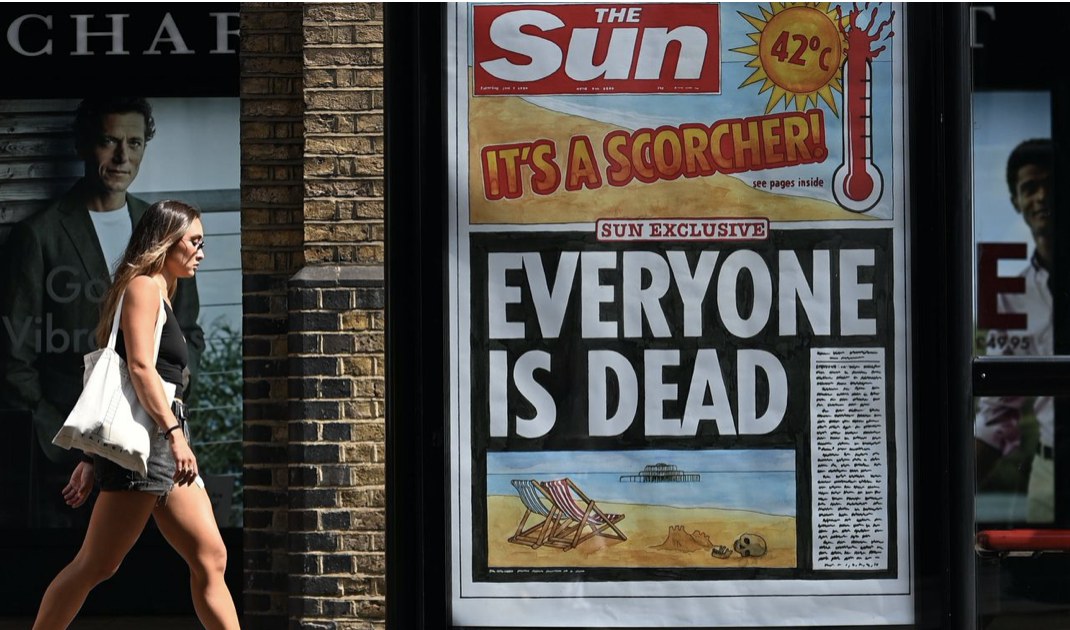By: Bjorn Lomborg – wsj.com –
Such arguments are misleading. It’s true that as temperatures rise the world will experience more heat waves, but humans also adapt to such things. In Spain, for example, rising temperatures have actually led to fewer heat deaths, because people have adapted faster than temperatures have gone up. It simply took air conditioning, public cooling centers and better treatment of maladies that are caused or aggravated by heat, such as heatstroke and heart disease.
The exclusive focus on heat deaths is also misleading. Across the world, low temperatures are much more dangerous than high ones: Half a million people die each year from heat, but more than 4.5 million die from cold. While rising temperatures will increase heat deaths, they will also decrease cold deaths. A recent Lancet study found that rising temperatures since 2000 have on net reduced the number of temperature-related deaths. Researchers concluded that by the end of the 2010s, rising temperatures globally were causing 116,000 more heat deaths annually, but also leading to 283,000 fewer cold deaths a year.
Moreover, politicians’ singular focus on climate change ignores that people are much more worried about rampant inflation, especially rising food and energy prices. And climate policies are making those problems worse.
Much of the extreme energy-price increase that normal people are dealing with is caused by Russia’s war in Ukraine. But things wouldn’t be nearly as bad if the West hadn’t thrown up green roadblocks to its own energy security, such as President Biden’s moratorium on gas leases or Europe’s refusal to dig into its substantial shale gas reserves. Climate policies also increase energy prices by subsidizing renewables like solar and wind. That makes it even harder to adapt to the extreme temperatures climate activists bemoan. You need cheap and reliable energy to afford air conditioning in the summer and heating in the winter.
Rising fuel prices are also making food more expensive. Low-cost synthetic fertilizer is one of the greatest technologies humanity has invented for feeding the world, but it’s mostly made with natural gas. Even with almost a billion people at risk of starvation, climate-obsessed bureaucrats still object to producing more fertilizer because of the fossil fuels required.
The cost of green policies will become even harder to bear if politicians make good on their promises to hit net-zero emissions. Achieving this globally by 2050 would cost more than $5 trillion a year for the next three decades, according to McKinsey. That would be one-third of total global tax revenue. If every American were to shell out more than $5,000 a year, it would only get the U.S. 80% of the way there by midcentury. Hitting 100% would likely cost more than twice that. The European Union already pays €69 billion a year in subsidies to support its renewables. But if the EU persists with its even stauncher promises of net-zero, that annual climate policy cost is likely to exceed $1 trillion.
No wonder there’s political pushback to environmental grandstanding. The Netherlands has been roiled by protests since the government mandated in June that nitrogen-oxide and ammonia emissions, which are produced by livestock, must be slashed by 70% to 80% in some parts of the country. As many as 40,000 farmers demonstrated against the measure last month. Holland is among the world’s 10 largest food exporters, and these policies would decimate the country’s agriculture industry while global hunger is rising.
Sri Lanka is the epitome of elite environmentalism gone wrong. Pushed to go organic by activists and the World Economic Forum, the government banned synthetic fertilizers in April 2021. Food production collapsed and the currency defaulted. Hungry and outraged citizens launched protests, overran the presidential palace, and forced the government to resign en masse and the president to flee the country.
It’s entirely possible to help the climate and working families at the same time. The policies to do so are innovation-focused. Policy makers need to recognize that they simply can’t eliminate fossil fuels with current technologies. The world gets almost 80% of its energy from fossil fuels, and even if all current climate policies were fully implemented, by midcentury fossil fuels would still provide more than half of all energy used world-wide, according to the International Energy Agency. Instead of sending energy prices sky-high by trying to force a transition to renewables prematurely, policy makers should focus on funding research to develop clean energy sources that are actually affordable and reliable. And instead of badgering farmers to go organic, governments should invest in research to develop varieties of crops and agricultural practices that deliver higher yields with a smaller environmental footprint.
Some of these technologies are already in development. Greater funding could bring them to fruition more quickly and do a lot more to help limit emissions than the policies activists now hawk. These sorts of sensible measures would cost much less than policies like net-zero, leaving more money to meet the world’s many other challenges.
It’s starting to dawn on some elites that their policies are creating political dangers. Frans Timmermans, the European Commission’s vice president, has said that many millions of Europeans may not be able to heat their homes this winter. This, he concludes, could lead to “very, very strong conflict and strife.”
He’s right. When people are cold, hungry and broke, they rebel. If the elites continue pushing incredibly expensive policies that are disconnected from the urgent challenges facing most people, we need to brace for chaos.
To see this article and subscribe to others like it, choose to read more.
 Listen Online
Listen Online Watch Online
Watch Online Find a Station in Your Area
Find a Station in Your Area








 Listen Now
Listen Now Watch Online
Watch Online
